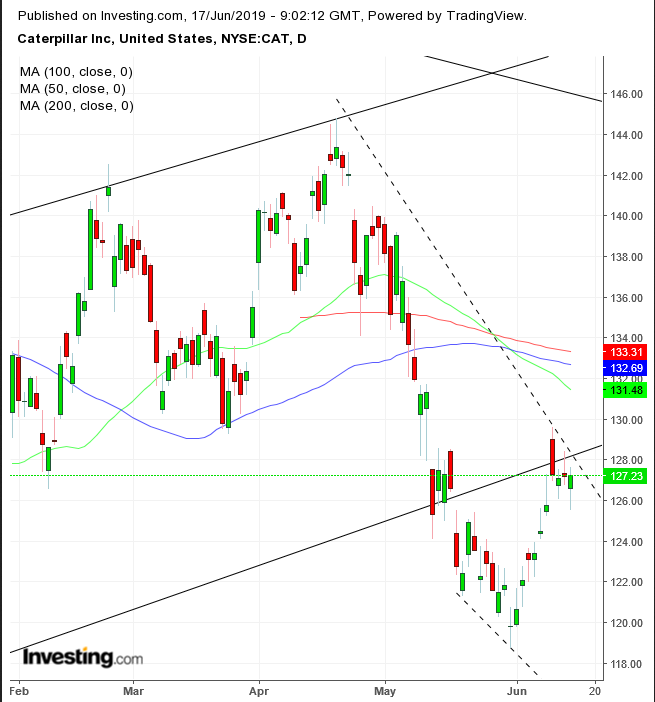Caterpillar (NYSE:CAT), which manufactures and sells heavy equipment for such things as construction, farming and mining, is looking increasingly likely to fall victim to the trade war between the U.S. and China. And as hopes of an agreement wax and wane, the messages from officials on both sides of the dispute aren't looking hopeful.
U.S. Commerce Secretary Wilbur Ross said yesterday he doesn’t expect a trade resolution even if President Donald Trump and Chinese President Xi Jinping do meet at the G-20 summit in Osaka this month, according to the Wall Street Journal. As well, the South China Morning Post reports that Caterpillar could be subject to tighter Chinese security and environmental reviews if the country hits back at U.S. tariffs, former commerce vice-minister Wei Jianguo says.
Indeed, Caterpillar already expects to lose between $250- and $350-million in 2019 on current tariffs, even before any “tighter Chinese security and environmental reviews.” This negative outlook is already being reflected in the stock's technical chart.

Shares of the industrial giant have already fallen out of its rising channel—where both buyers and sellers agree that prices should be higher—as the 50 DMA (green) fell below its 200 DMA (red), triggering a Death Cross. Wall Street considers this the the scariest technical trigger, as it shows prices breaking down. The price attempted to climb back into the channel but got hit over the head and was pushed back down.
Trading Strategies
Conservative traders should wait for a second trough beneath the May 31, $118.41 low, to complete a downtrend, before shorting, or for a new series of ascending peaks and troughs, past the April 18, $144.77 peak, for a long position.
Moderate traders might risk a short after a close below $125 – both for its psychological breach, as well as for clearly establishing a peak. Then, they could wait for a pullback for a better entry.
Trade Sample
- Entry: $125
- Stop-Loss: $126
- Risk: $1
- Target: $122
- Reward: $4
- Risk-Reward Ratio: 1:4
Aggressive traders may short at will, providing they understand the risks and conclude their long-term goals could withstand such potential losses.
Trade Sample
- Entry: $128
- Stop-Loss: $130, round number and above the June 11 high
- Risk: $2
- Target: $122, above late May-early June congestion and the $120 round number
- Reward: $6
- Risk-Reward Ratio: 1:3
